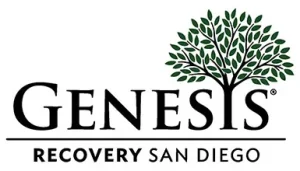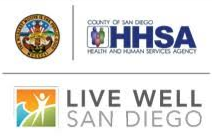Kratom is tempting for addicts in recovery. That is especially true for addicts in early recovery and those transitioning out of inpatient treatment back into the world. Inpatient treatment is a protected environment and most facilities do not allow cell phones or unsupervised internet access. Patients are kept busy throughout the day and they sleep, breathe, and eat recovery. Upon leaving many people feel overwhelmed by having all their freedom back so suddenly. It is hard to resist the urge to be around people, places, and things associated with past drug use. Resisting is even harder if you’re back on your own and not in sober living or some kind of outpatient program to help ease the transition. Even if you are in a sober living that routinely administers drug tests, kratom won’t show up on most of them. You have to want to stay sober for yourself but there are a lot of things that you can put in place to help you do that. Drug tests and sober living homes are two of those but if you’re using something that won’t be tested for, then you don’t have to worry about losing a job or a place to live.
Kratom comes from a tree in the coffee family and grows in Southeast Asia. At lower doses, it reportedly produces stimulant-like effects and at higher doses, it acts more like an opiate. It actually activates the dopamine receptors in the brain the same way that opiates do. The opiate-like effects and the fact that it won’t show up on most drug tests make it an attractive alternative for opiate addicts. Opiates, in particular, get a stranglehold on users and anything that is similar is going to be irresistible for many people. In early recovery when an addict is particularly vulnerable, kratom can be a real Pandora’s box. It’s easy to fool oneself into thinking kratom is safe. Anything that can affect an addict like their drug of choice and seems less harmful is a relapse waiting to happen.
There is a lot of controversy within different levels of government over kratom. In 2014 the FDA created an import alert for it. In August of 2016, the DEA announced that they wanted to make kratom a Schedule I drug. That created a lot of protests from people claiming to use it for pain and opiate withdrawals. A group of sixty congressmen and senators even sent letters to the DEA administrator protesting the statement. In October of 2016, the DEA’s announcement was withdrawn. The organization is postponing any further action while reviewing thousands of public comments and pending further FDA investigation. Currently, kratom is legal federally but is banned in several states. There has been heated debate over the legality of kratom in those states where it has been banned and states considering banning it. Kratom is legal in California except in a handful of cities, including San Diego. A city ordinance passed on June 15th, 2016 banned it along with spice, bath salts, and other synthetic drugs.
I have a good friend that I was in treatment with who was an opiate painkiller abuser. He used to work for a major kratom distributor as a production manager and became a heavy kratom user while working there. I asked him some questions about his experience taking it. He would take the capsules and said when he took small doses, about two or three grams, that it felt like a buzz from strong coffee. Another gram or two on top of that would give him the same feeling but with a little opiate-like “tickle”. Seven or eight grams was similar to taking a Vicodin. At one point he had been trying to stop taking pain pills and was using kratom to try to quit. He said he would get high off of the kratom capsules but even at really high doses that it wasn’t anything like Percoset or Oxycontin. For an opiate user like him, it certainly wasn’t like the real thing. The kratom did help keep him off of the pain pills but he still had cravings for them and eventually went back to them. Next, I asked him about kratom being addictive and withdrawal symptoms. It was definitely addictive for him, he said, and after a couple of months, he needed to take it throughout the day to feel like himself and to avoid withdrawals. Over time he needed to take more for the same effects. The withdrawal symptoms were the same as those of opiates (depression, nausea, trouble sleeping, body aches) but not as intense. His opinion is that it could be useful for getting through the initial symptoms during acute opiate withdrawals but that it should not be used at all by anyone already in recovery. Especially not opiate and heroin addicts. He said it’s too similar and not nearly satisfying enough.
I found an interesting article on WebMD.com. Some valid points are made by doctors and researchers. Dr. Christopher McCurdy, a professor at the University of Florida, says that he believes kratom definitely has potential for use in helping people get off of opiates. His research shows that many people don’t experience withdrawals from kratom. One of the main problems, however, is that kratom is not regulated. Because of that, you don’t know what is actually in kratom products sold on the market. Dr. McCurdy performed a study in 2016 that tested different kratom products and they were shown to have higher levels of opioids than raw kratom leaves. Dr. Edward Boyer of Brigham and Women’s Hospital in Boston points out that he believes kratom is probably addicting but much less so than Methadone and Suboxone and they are both approved for opiate addiction treatment.
I personally have talked with a lot of addicts who have tried Methadone and Suboxone. None of them had anything good to say about either, especially Suboxone. They all told me that the withdrawals from Suboxone were worse than heroin. Towards the end of the Suboxone treatment, they weren’t able to handle the withdrawals and used heroin again. When I went to detox for the second time I was offered Suboxone or a non-opiate protocol and I chose the non-opiate without having to think about it. The counselors there told me that after I was done kicking the heroin if I used the Suboxone, I would have to go through another kick when I was done. So what’s the point of taking it? No thank you. I really don’t get it. I could write a long blog on what I think about Big Pharma’s influence on the FDA so I won’t even go down that rabbit hole here.
The opiate epidemic is real and continually getting worse. I’ve seen how it destroys lives and families firsthand. In 2016 there were 63,632 deaths from drug overdoses, two-thirds of which were from opiates. That was a 21.5% increase from 2015. Drug overdose deaths are now the leading cause of death in the U.S.
There are so many factors contributing to this problem that there is no easy solution. As far as kratom is concerned in this issue, we need to be cautious. On one hand it may help people start their journey in recovery and on the other hand it may cause people already in recovery to relapse. I have to agree with my friend who worked at the kratom distributor. I believe that it has the potential for opiate withdrawal treatment and I look forward to the findings of continued research. I truly hope that it can be a successful aid for people trying to kick opiates and help curb the overdose death rate. I also agree with my friend that anyone in recovery, especially opiate addicts, should give kratom a wide berth. Personally, I would be lying if I said that I wasn’t interested to try it. But if I dip my toe in the water, I’m afraid I’ll fall in and drown. So, for now, I’m going to stay on the shore.
I don’t know if kratom should be legal or not. Maybe it should only be available by prescription. Maybe it should be available to anyone but if it is, like anything, it should be used in moderation. If it is legal, it definitely needs to be regulated. People need to know what they’re ingesting. But kratom isn’t the problem. If a substance can be abused, people are going to abuse it. No matter what the research shows us about kratom, the debate is going to continue.
If you or a loved one is struggling with opiate addiction the experts at Genesis Recovery can help. Call us at 619-797-7319 to find out how we can help reach and maintain long term recovery.

